
Gregory Dale Bear was an American writer and illustrator best known for science fiction. His work covered themes of galactic conflict, parallel universes, consciousness and cultural practices, and accelerated evolution. His last work was the 2021 novel The Unfinished Land. Greg Bear wrote over 50 books in total.
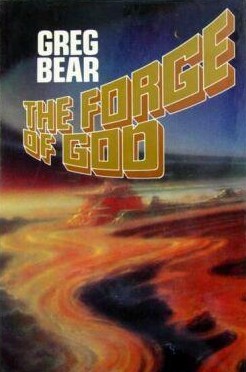
The Forge of God is a 1987 science fiction novel by American writer Greg Bear. Earth faces destruction when an inscrutable and overwhelming alien form of life attacks.
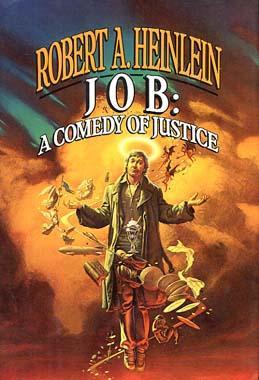
Job: A Comedy of Justice is a novel by Robert A. Heinlein published in 1984. The title is a reference to the biblical Book of Job and James Branch Cabell's book Jurgen, A Comedy of Justice. It won the Locus Award for Best Fantasy Novel in 1985 and was nominated for the Nebula Award for Best Novel in 1984, and the Hugo Award for Best Novel in 1985.

Friday is a 1982 science fiction novel by Robert A. Heinlein. It is the story of a female "artificial person", the eponymous Friday, genetically engineered to be stronger, faster, smarter, and generally better than normal humans. Artificial humans are widely resented, and much of the story deals with Friday's struggle both against prejudice and to conceal her enhanced attributes from other humans. The story is set in a Balkanized 21st century, in which the nations of the North American continent have been split up into a number of smaller states.

Dangerous Visions is an anthology of science fiction short stories edited by American writer Harlan Ellison and illustrated by Leo and Diane Dillon. It was published in 1967 and contained 33 stories, none of which had been previously published.
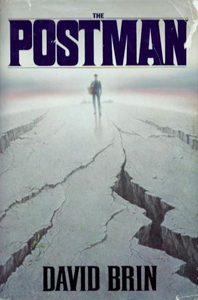
The Postman is a post-apocalyptic dystopian science fiction novel by David Brin. It is about a man wandering the desolate Oregon countryside who finds a United States Postal Service uniform, which he puts on and then claims he is a mail carrier and federal inspector for the "Restored United States of America". His mail service and claims about the return of a central government gives hope to the people, who are threatened by a murderous, neo-feudalist militia.
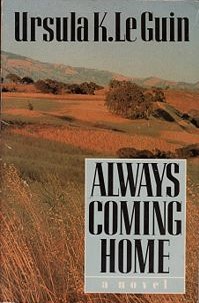
Always Coming Home is a 1985 science fiction novel by American writer Ursula K. Le Guin. It is in parts narrative, pseudo-textbook and pseudo-anthropologist's record. It describes the life and society of the Kesh people, a cultural group who live in the distant future long after modern society has collapsed. It is presented by Pandora, who seems to be an anthropologist or ethnographer from the readers' contemporary culture, or a culture very close to it. Pandora describes the book as a protest against contemporary civilization, which the Kesh call "the Sickness of Man".
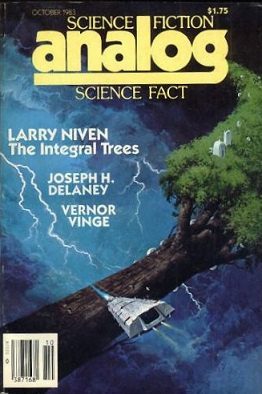
The Integral Trees is a 1984 science fiction novel by American writer Larry Niven. Like much of Niven's work, the story is heavily influenced by the setting: a gas torus, a ring of air around a neutron star. A sequel, The Smoke Ring, was published in 1987.
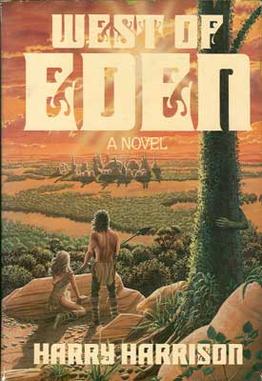
West of Eden is a 1984 science fiction novel by American writer Harry Harrison.
The use of nanotechnology in fiction has attracted scholarly attention. The first use of the distinguishing concepts of nanotechnology was "There's Plenty of Room at the Bottom", a talk given by physicist Richard Feynman in 1959. K. Eric Drexler's 1986 book Engines of Creation introduced the general public to the concept of nanotechnology. Since then, nanotechnology has been used frequently in a diverse range of fiction, often as a justification for unusual or far-fetched occurrences featured in speculative fiction.

The Urth of the New Sun is a 1987 science fiction novel by Gene Wolfe that serves as a coda to his four-volume Book of the New Sun series. Like Book of the New Sun, it is of the Dying Earth subgenre. It was nominated for the Hugo Award for Best Novel, Locus Award for Best Science Fiction Novel and the Nebula Award for Best Novel in 1988.

Future on Ice (1998) is a science fiction anthology edited by American writer Orson Scott Card, belated companion to Future on Fire (1991). It contains eighteen stories written in the 1980s by different writers including "The Fringe" by Card himself.

Lost Dorsai is a science fiction novella by American writer Gordon R. Dickson. It won the Hugo Award for Best Novella in 1981 and was also nominated for the Nebula Award in 1980.

"The Sharing of Flesh" is a science fiction novelette by American writer Poul Anderson. Originally published in Galaxy Science Fiction, it won a 1968 Hugo Award for Best Novelette and was nominated for a 1969 Nebula Award. The story has appeared in the collections The Night Face & Other Stories (1979), The Dark Between the Stars (1981), Winners (1981), and The Long Night (1983).
"The Dog Said Bow-Wow" is a science fiction short story by American writer Michael Swanwick, published in 2001. It won the 2002 Hugo Award for Best Short Story and was nominated for the 2002 Nebula Award for Best Short Story. The Dog Said Bow-Wow is the title story of his 2007 short story collection, published by Tachyon Publications, and was reprinted in the same year in Rewired: The Post-Cyberpunk Anthology.

Red as Blood, or Tales from the Sisters Grimmer is a short story collection of dark fantasy retellings of popular fairytales by British author Tanith Lee. Contrary to what the title may suggest, it not only includes retellings of fairytales by the Brothers Grimm, but also by Charles Perrault, Gabrielle-Suzanne Barbot de Villeneuve or Alexander Afanasyev. The title story was nominated for a Nebula Award.

Terry Carr's Best Science Fiction of the Year is an anthology of science fiction short stories edited by Terry Carr, the fourteenth volume in a series of sixteen. It was first published in paperback by Tor Books in July 1985, and in hardcover and trade paperback by Gollancz in October of the same year, under the alternate title Best SF of the Year #14.
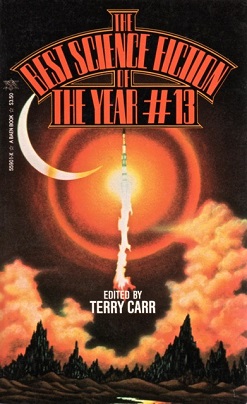
The Best Science Fiction of the Year #13 is an anthology of science fiction short stories edited by Terry Carr, the thirteenth volume in a series of sixteen. It was first published in paperback by Baen Books in July 1984, and in hardcover and trade paperback by Gollancz in December of the same year.

Terry Carr's Best Science Fiction of the Year #15 is an anthology of science fiction short stories edited by Terry Carr, the fifteenth volume in a series of sixteen. It was first published in paperback by Tor Books in August 1986 and in hardcover and paperback by Gollancz in October of the same year, under the alternate title Best SF of the Year #15.
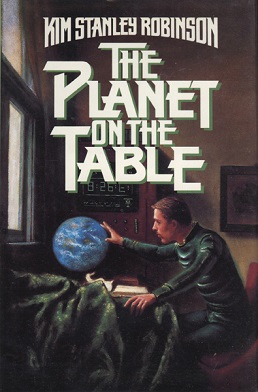
The Planet on the Table is a collection of science fiction stories by American writer Kim Stanley Robinson, published in hardcover by Tor Books in 1986. A British paperback edition appeared in 1987, as well as a Tor paperback reprint; a French translation was issued in 1988. The collection was republished in the 1994 Tor omnibus Remaking History and Other Stories. The collection takes its title from a poem by Wallace Stevens, which provides the book's epigraph.


















